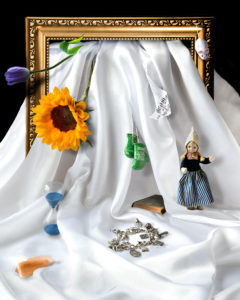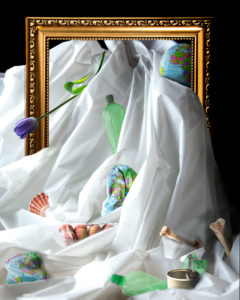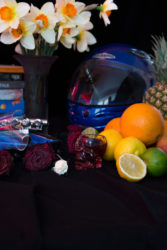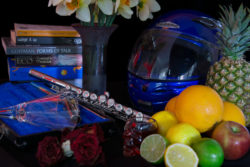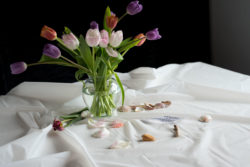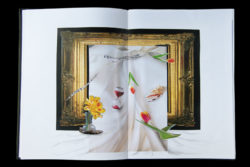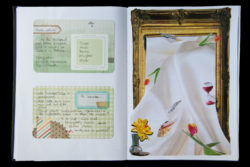- Contemplating Mortlaity
- Feminist Feminine
- Mother Earth
“The Vanitas still life painting is designed to remind the viewer that death frames our possession of the object world; indeed that our possessions are capable of outliving us, thus rendering the ownership of things illusory.” (Wynne, 2016)
Inspired by a visit to Bow Arts to see Neudecker’s Plastic Vanitas this series draws on the tradition of Vanitas still life to explore notions of impermanence and mortality.
Contemplating Impermanence is a personal journey through mortality. It echoes some of the original Vanitas symbolism combined with personal objects (detailed connotations are included in my learning log). This image includes items that were given to me by family members who have been dead for some time and now have a potency for me that sits at the intersection of life and death. The pixelated shell questions how we might be re-framing our lives and mortality given the growing industry around digital afterlife (there are now over 30 million Facebook accounts belonging to dead people).
Feminist and Feminine is a statement about the role of women in art and the relationship of women artists to still life. It contains references to some of the major female still life painters from the 16th – 18th Centuries. It also raises issues of feminism and femininity. The breaking of the frame in this image, is about flow through time, and acknowledges how these women challenged the system in their own ways. My signature is added, because I can do so without recourse to another authority. Something early women painters could not do unless they were allowed to join a Guild or were accepted into the Academy.
Mother Earth takes me to the ultimate issue of impermanence, and references the actions and impact of humankind on our planet. The influence of capitalism (the Tulip), mass production (plastics) and mass consumption (rubbish). Our increasingly distanced relationship in the West to food (flat peaches in plastic). The impact we are having on land and sea (the shell and plastics). In this image the backdrop is a deliberately more chaotic plastic cloth.
Acknowledgements:
- Mariele Neudecker for her permission to feature her images in my learning log
- The women who broke new ground – Rachel Ruysch, Clara Peeters, Giovanna Garzoni and Fede Galizia
- The Thames Valley Group and FB OCA Photography Level 1 Group
References and citations
Wynne, D. (2016). Women and personal property in the Victorian novel. London: Routledge.




